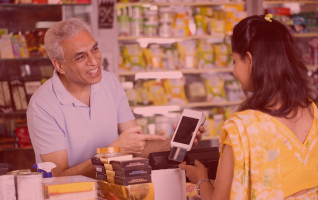Picture this, you are on your way to work and you pull into one of your regular fast food restaurants drive-thru service. But, instead of whipping out your phone or card to tap/swipe to pay after you place your order, the payment is done simultaneously by detecting and authenticating your voice as you order. You simply grab your burger and beverage and leave. That’s a glimpse into the future of retail. Amazing! Isn’t it?
This might be one of the innumerable theoretical assumptions where payments industry is headed. But, with Canada modernizing its payments infrastructure with a vision to make the ecosystem secure, flexible and future-ready – it has the potential to dramatically revolutionize payments. From day-to-day banking, payroll, retail transactions, merchant payments, fund transfers, taxes, to utility bills the possibilities to introduce one-touch, convenient and invisible transaction processes are endless.
Canadians are already increasingly shifting towards cashless transactions, with more than 25% in favor of open banking system. It is true that mobile wallets and other fintech payment services such as GooglePay, ApplePay, AndriodPay, etc. are making our lives easier, but the friction still exists at the backend. But that is about to change. With Canadian financial institutions exploiting newer payment rails, sophisticated data structures shared across the ecosystem and overlay payment services, we are looking at near real-time availability and clearing of funds.
Open banking system is gaining massive momentum across the globe. In fact, EU’s Second Payment Services Directive (PSD2) marks a watershed moment in integrated/digital payments and policies regulating that, in Europe. The directive is set to provide a seamless connectivity between bank systems and third-party payment services providers for account information, payment initiation and transfer of funds using open application program interfaces (APIs). This is going to have game-changing impact on instant payments.
Many countries in EU have already taken initiatives to implement open banking systems, some of the major examples are Slovenia and France (STET), Poland (via PolishAPI) and the Berlin Group, the frontrunner in implementing modern, interoperable and seamless set of APIs. Open banking and APIs has become a global trend with several other nations actively working towards launching unified payments systems to enable faster, contactless and invisible payments. India, for example, has launched a Unified Payments Interface (UPI). It helps integrate multiple bank accounts into a single mobile application facilitating seamless fund routing as well as merchant payments through a single interface.
Needless to say, we are heading towards an exciting time within the payments industry. Open banking systems will not only seamlessly interconnect the finances of companies but will be the gateway to invisible banking. And when data exchange triggered by open banking is combined with machine learning (ML) and artificial learning (AI), the opportunities it is going to hold is simply endless.
Needless to say, we are heading towards an exciting time within the payments industry. Open banking systems will not only seamlessly interconnect the finances of companies but will be the gateway to invisible banking. And when data exchange triggered by open banking is combined with machine learning (ML) and artificial learning (AI), the opportunities it is going to hold is simply endless.
Author Jayesh Sawant
Payments Practise and Innovation Head
Canada






